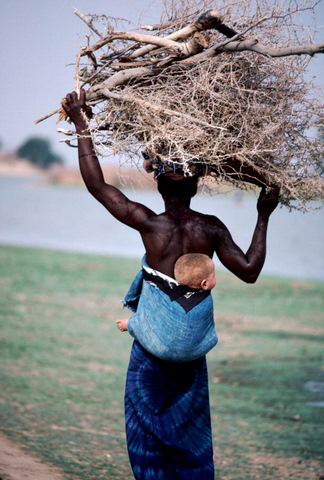What does rape have to do with trees? What does HIV have to do with fish? Blindness with water? Everything. Especially if you are a woman in the developing world and you are trying to feed your family.
Let me give you three examples of the links between women, survival and natural resources:
Forests are a safety net for many of the world's poor; they provide food, water, medicine and energy. In many places around the world forests are declining. That means there are fewer trees to do important things like make rain, protect soil and provide homes for birds, primates and other animals, all of which play important roles in maintaining ecosystems; and, frankly, make the world a more interesting place to live. As forests disappear women who must collect wood to cook with have to travel further and further away from the safety of their communities to find resources. They frequently get raped along the way. It is estimated that as much as 90 percent of rape that occurs in conflict areas in Sub-Saharan Africa happens when women are out collecting firewood and water. The alternative is to switch to a fuel source such as dung, with dreadful health consequences. In fact, indoor air pollution from burning toxic fuels results in the death of more women and children per year than malaria.

Women around the world provide wood for energy, often risking personal safety and health to obtain it. Photo © of Kay Muldoon
In many places around the world fisheries are collapsing. As one kind of fish disappears, the impacts cascade throughout the marine system. For example, if the fish that eat algae are overfished then algae start growing uncontrollably and prevent things like coral from surviving. Coral provides a habitat that tends to support more diversity, a characteristic treasured for many reasons including the fact that it usually provides homes to a lot more fish that can then be caught and eaten. When fisheries collapse we understand that fishermen lose their jobs, but what about the people who clean, process and trade the fish? Those people are often women. When fisheries collapse women have less ability to find other kinds of work locally or to travel to find new opportunities. So in the wake of a fishery collapse women stay behind, with few economic options, and they frequently resort to trading sex for food to feed their children. This, in combination with other factors, results in astoundingly high levels of HIV/AIDs in fishing communities. Consider these examples:
- Thirteen to 20 percent of marine fishing boat crews in Thailand tested HIV-positive while the general prevalence rate was 1.5 percent.
- Fishermen are five times more likely to die of AIDS-related illness than farmers in the Lake Victoria region.
- In some fishing communities in Africa, for every young man who acquires HIV/AIDS, nine young girls acquire it. That's right. Nine.
Eighty percent of sewage in the developing world is released untreated into rivers, streams and coastal areas. These inputs heavily impact water resources making them places you wouldn't want to swim in or eat fish that were caught in them, much less drink the water or bathe your children in it. In addition to making freshwater and marine habitats pretty nasty places sewage also contributes to the creation of dead zones, huge areas in our oceans that smoother every form of life. But in developing countries, the impacts from contaminated water are much more personal. It is the cause of blindness, cholera, dysentery, hepatitis and a myriad of other diseases that impact women disproportionally, mainly because women come into contact with water more often as they are the chief providers of this important resource.
These are not random factoids derived from scrounging the literature for dire statistics. This is the norm for the 60 percent of the world's poor that live in ecologically vulnerable habitats. In Bangladesh, as much as 90 percent of the people rely on natural resources for survival. In areas of Sub-Saharan Africa the number can be as high as 95 percent. Since most of the world's poor are women, the link between basic survival and natural resource management is gender biased. To make matters worse, aid to the rural poor has decreased by 50 percent between 1987 and 2007. So these women are losing on the conservation front and on the development front.
When we first launched New Course, we set out to do two things. 1) engage women in conservation and development 2) help our partners recognize that development and conservation goals are interlinked. From day one we were told "you are either a development organization or a conservation organization -- you can't be both." I don't buy that. A successful battle against either poverty or natural resource degradation is not going to happen with team "environmental stewardship" fighting it out with team 'human well-being'. When you look at the big picture and the long-term goals of these "teams", they are aligned and interdependent. We can't have healthy people if we don't have healthy forests and oceans. And we can't expect the resources of forests and oceans to be set aside in pristine protected areas when people have no food to eat, no water to drink, and no energy sources to utilize. What we believe, what we know, is that sometimes success can only be achieved if you are both a development organization and a conservation organization. And most times, success can only be achieved if you engage the women who deal with the reality of natural resource degradation and poverty on a daily basis.
There are solutions to the problems of poverty and natural resource degredation that are both possible and practical. It's time to work together to find them.